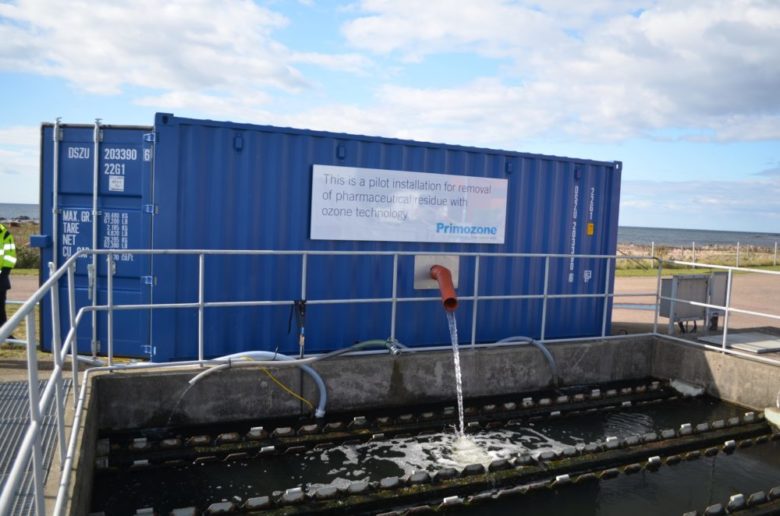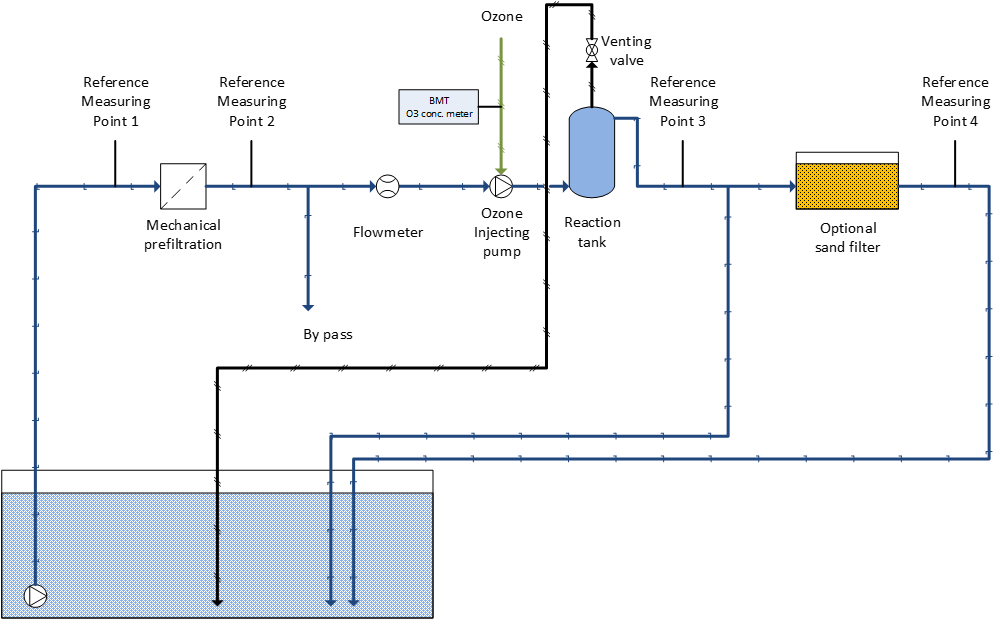Ozone Installations for Removal of Pharmaceutical Residue

Objective
To demonstrate that ozone treatment is a reliable and cost-efficient solution for removing pharmaceutical residues and other micropollutants from municipal wastewater under various treatment conditions.
Primozone solution
Primozone Container Module
10 pilot installations was run in Sweden during 2014-2015
At the beginning of 2014 Primozone received funding to build a mobile pilot scale ozone system for removal of a specific kind of micropollutants i.e. pharmaceutical residue. Ozone has already been proven as one of the most efficient techniques for removal of pharmaceutical residue. The aim of these installations was to be able to prove the concept existing waste water treatment plants and to test and confirm the system design waste water treatment plants with different process conditions and treatment methods as well as different population structure.
Pharmaceutical Residues in Wastewater
Numerous studies have established that our wastewater contains micropollutants. Of emerging concern are PPCPs (Pharmaceuticals and Personal Care Products). Many studies have also been conducted on the impact of these micropollutants on the environment. So far, limited actions have been taken to remove these residues, but political initiatives are starting to show results.
Sweden is at the forefront of research on how to reduce pharmaceutical residues in wastewater. Several wastewater treatment plants have identified the problem, and many Swedish universities are studying the environmental effects of these residues. Swedish governmental bodies are also providing funding for further research.
Primozone believes that it is time to take action and start removing micropollutants, including pharmaceutical residues, from our wastewater now.
Current wastewater treatment plants are not equipped to remove pharmaceutical residues. However, proven technologies are readily available, and the additional cost to the water bill is very low.
Project Implementation – Removal of Micropollutants
Installation
The installation of the complete system takes approximately one day.
Sampling
After the system has been operating for about two weeks, it is time to collect samples for analysis.
Samples are taken before pre-filtration, after pre-filtration, and after ozone treatment. If an additional sand filter is used, samples are also taken after that step.
ing agent, breaks down complex organic compounds and significantly reduces micropollutant concentrations.

Analysis
The samples will the be analyzed for the following substances
| Substance | Mode of action |
|---|---|
| Amlodipine | Antihypertensives |
| Atenolol | Antihypertensives |
| Bisoprolol | Antihypertensives |
| Caffeine | Stimulants |
| Carbamazepine | Sedatives |
| Ciprofloxacin | Antibiotics |
| Citalopram | Antidepressants |
| Diclofenac | Anti-inflammatories |
| Furosemide | Diuretics |
| Hydrochlorothiazide | Antihypertensives |
| Ibuprofen | Anti-inflammatories |
| Ketoprofen | Anti-inflammatories |
| Metoprolol | Antihypertensives |
| Naproxen | Anti-inflammatories |
| Oxazepam | Sedatives |
| Paracetamol | Anti-inflammatories |
| Propranolol | Antihypertensives |
| Ranitidine | Antiulcers |
| Sertraline | Antidepressants |
| Sulfamethoxazole | Antibiotics |
| Terbutaline | Asthma medication |
| Tetracycline | Antibiotics |
| Trimetoprim | Antibiotics |
| Warfarin | Anticoagulants |
